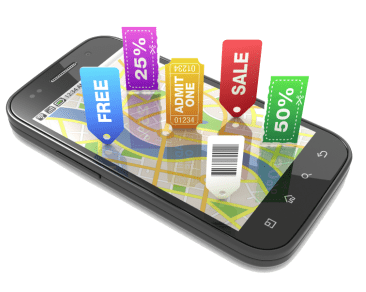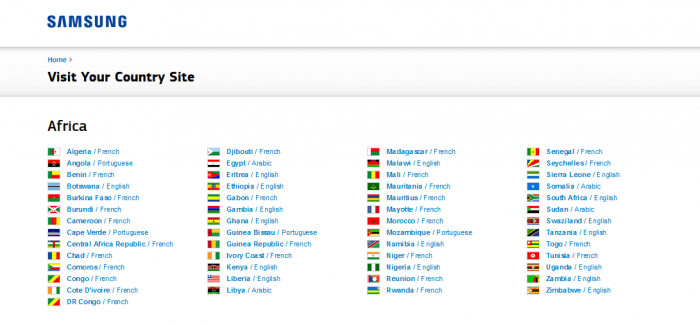Marketers can better outreach their customers using location data
It's now commonplace for businesses to create mobile responsive websites and apps to offer similar functionality to a desktop website. But if your mobile experience are limited to features available on your desktop site you're missing out on the opportunity to deliver content in context. Customer location information can help businesses deliver a better and more relevant mobile experience and enable them to target the right audience for their services. In this article I'll look at some example for geo-targeting to provide more relevance.

Source: Subiz.com
Marketing campaigns follow a chosen strategy for targeting customers and the choice of location is important in determining the over-all success of the marketing campaign. As the location impacts demographics and buying behavior.
A woolen apparel retailer who makes hundreds of sales in a day in a cold region fails to generate a similar impact in warmer regions however strong his campaign outreach be. This clearly states if the target audience is unfit even the strongest brand value cannot generate sales.
Improving Customer Experience
For an enhanced customer experience behavioral data is gathered based on the customer’s past purchases. Applying location filter to this data aids in creating relevant recommendations.
Proposing an awesome urban restaurant to a far-off small towner can be helpful during one of his trips across the place which happens to be occasional. But if the same place is suggested to a nearby resident this would benefit both the customer and the business.
Ultimately the result matters. If an ad fails to invoke the desired action it’s a revenue loss to the advertiser and weakens credibility of the recommending site. On the other hand a smart marketing campaign will establish a sound relation between customers and brands. The first thing needed by a traveller who lands in a city will be commutation, and if he gets automatic alerts for cab services in the vicinity it would be supportive marketing.

Source: redpoint.net
How it works
Geo-location is identifying the real-world geographical location of an object through either GPS tracking or inbuilt data transmitting ability of smart devices. Shopping malls and public places that offer free WiFi services determine device location by hotspot wireless identifiers.
A mobile geo-location identifier locates your device’s position and reports it to the ad servers. The ad servers maintain a database of location data and ad campaigns. As they receive a location update from a device they send relevant ad notifications to it. The objective is to draw the customer to the brand’s point-of-sale.
Geo-Fencing
Marketers build a virtual fence around a geographical location to send advertisement messages within that area. If this perimeter is constructed near a store, customers who happen to fall within the perimeter receive these marketing messages. This assists in the in-store shopping experience where customers can scan and compare products on their smartphones rather than searching through the entire store.
Geo Conquesting
Here companies target their competitor’s audience by building a geo-fencing around their competitor store. Such that when a consumer enters the competitor store, he automatically receive alluring offers from the advertiser’s store. This may seem a cut–throat marketing tactic but it benefits the consumers immensely by providing them open choices. It therefore may well become far more popular in the coming years, as more stores develop geo-targeting capabilities and competition intensifies as a result.
Implementations
A basic and easy to understand example of geo-targeting online is the Samsung website built in different languages (also commonly used on desktop). The server displays the most appropriate site version based on visitors region of login.

Source: Samsung.com
There are many implementations of location based technological advancements:
- Apps like Foursquare/Swarm that are completely dependent on location data are widely used by consumers for sharing place reviews.
- Social sites allow users to upload their information along with their geo-location. Location data is an essential part of digital life, such that 30% of social media users include current location in their social updates.
- Running apps integrate geo-location capabilities to monitor distance travelled by runners, calculate their speed and plan their route.
- And the most worthwhile application of this technology is for tourists visiting new places. Where they have no prior knowledge of the place and need authentic suggestions.
The number of people who include this location data is increasing. However with every good invention follow its drawbacks. There have been reports of people turning off this location data on their phones owing to privacy concerns. But that is mostly restricted to social updates and not particularly marketing alerts.
Measure results
Sales analytics can help evaluate the outcome of these location-based marketing campaigns. This data will be highly valuable to store owners as it could highlight missed opportunities.
Popular Apps
Field Trip works as a guide providing local restaurants visiting places, history etc. The best part is you can set your frequency of alerts and select a notification category.
Using SeeClickFlix app you can report a problem along with a photo of the event. The app automatically registers reporter’s current location and time and saves him from entering additional details.
Google offers Geo-aware ads and so do other social platforms like Facebook for advertisers to better locate their target audience.
Final Words
Many millennials are so accustomed to this location based marketing that they expect relevant updates on their smartphones as they enter a mart or after they search something on their devices. This is because these contextual updates create a more personalized experience for smartphones users by interpreting their needs before they spew it out. As people increasingly come to expect this personalised shopping experience delivered via mobile, more and more companies will need to use geo-location software to stay ahead of the competition.
Author Bio

Thanks to
Sapna for sharing her advice and opinions in this post. Sapna is a creative content writer at
MoveoApps, an mCommerce App Development Company. She is a software engineer with a love for writing. When she’s not writing she is probably reading something. You can follow her on
Twitter.






 Thanks to
Thanks to 


